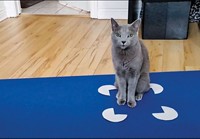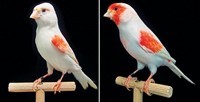Advertisement
Grab your lab coat. Let's get started
Welcome!
Welcome!
Create an account below to get 6 C&EN articles per month, receive newsletters and more - all free.
It seems this is your first time logging in online. Please enter the following information to continue.
As an ACS member you automatically get access to this site. All we need is few more details to create your reading experience.
Not you? Sign in with a different account.
Not you? Sign in with a different account.
ERROR 1
ERROR 1
ERROR 2
ERROR 2
ERROR 2
ERROR 2
ERROR 2
Password and Confirm password must match.
If you have an ACS member number, please enter it here so we can link this account to your membership. (optional)
ERROR 2
ACS values your privacy. By submitting your information, you are gaining access to C&EN and subscribing to our weekly newsletter. We use the information you provide to make your reading experience better, and we will never sell your data to third party members.
Education
Newscripts
Biological Color Preferences
by Lauren K. Wolf
November 17, 2008
| A version of this story appeared in
Volume 86, Issue 46

Chris de Burgh, the singer-songwriter who penned the popular '80s love song "The Lady in Red," may have been onto something. "I've never seen you looking so lovely as you did tonight ... I've never seen so many men ask you if you wanted to dance," de Burgh sings amorously of his MUSE IN A RED DRESS.
The singer's heightened feelings of attraction, as well as those of the other gents, may have been pumped up by his lady's color of choice.
Researchers at the University of Rochester recently demonstrated that the color red attracts men to women and that men are unaware of its effect (J. Pers. Soc. Psychol. 2008, 95, 1150). Andrew J. Elliot, the study's principal investigator and a professor of psychology, says this work scientifically documents some of the effects of color on behavior in relationships.
To quantify red's effect, Elliot and postdoc Daniela Niesta conducted several experiments. In one experiment, heterosexual and bisexual male test subjects were asked to respond to a photograph of a woman on a red or white background. They answered questions such as, "How pretty do you think this person is?" Other experiments contrasted red-background photos with ones having a gray or green background.
To ensure that test subjects were swayed by nothing other than hue in these experiments, Elliot and Niesta made sure that all photo colors were precisely equated in saturation and brightness level.
In another experiment, the shirt of the woman in the photos was digitally colored red or blue, and test subjects answered questions such as, "How much money would you be willing to spend on your date" with this person?
In every instance, the woman in the photo framed by or wearing red was rated significantly more attractive by male test subjects. They also felt she merited a more expensive night out. Female test subjects, on the other hand, were not affected by the color red: They did not find the photographed women associated with red to be more attractive.
Although societal influences cannot be ruled out, Elliot and Niesta argue that men's quantifiable response to red most likely also has deep biological roots. They note, for instance, that female baboons and chimpanzees attract males by flushing red in conspicuous anatomical regions when they are ready to mate.
"Our research demonstrates a parallel in the way that human and nonhuman male primates respond to red," the authors write. "Our findings confirm what many women have long suspected and claimed—that men act like animals in the sexual realm."

Providing men more food for thought on their mating and DATING CHOICES, the science-news junkies at the Annals of Improbable Research highlighted the study, "Why Do Blue-Eyed Men Prefer Women with the Same Eye Color?" (Behav. Ecol. Sociobiol. 2007, 61, 371). The authors, Bruno Laeng, Ronny Mathisen, and Jan-Are Johnsen of the University of Tromsø, in Norway, surveyed 88 men and women with either blue or brown eyes about their attraction to men and women in close-up photos.
The photos were manipulated so that each model would display both blue and brown eye color. Men, at least blue-eyed men, once again showed a color-related preference. Like Elliot and Niesta, these scientists argue for a biological link to explain why blue-eyed men prefer women sharing the same recessive gene for eye color. The results "suggest the presence of male adaptation for the detection of paternity based on eye color, as a phenotypically based assurance of paternity," the authors write. Only when both parents have a recessive trait will all offspring also exhibit that trait. So a child born of two blue-eyed parents without that same trait would signal that the woman has wandering eyes.
Lauren Wolf wrote this week's column. Please send comments and suggestions to newscripts@acs.org.





Join the conversation
Contact the reporter
Submit a Letter to the Editor for publication
Engage with us on Twitter